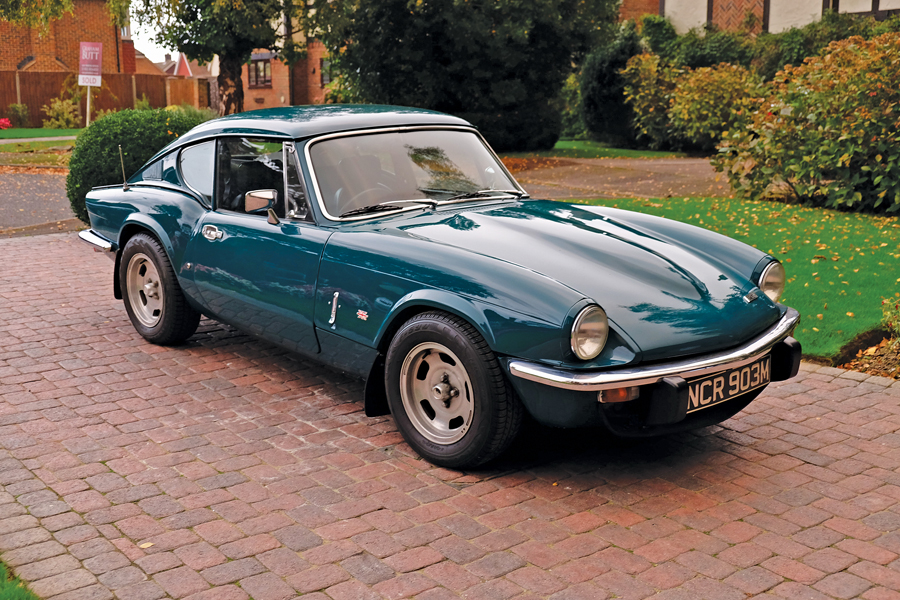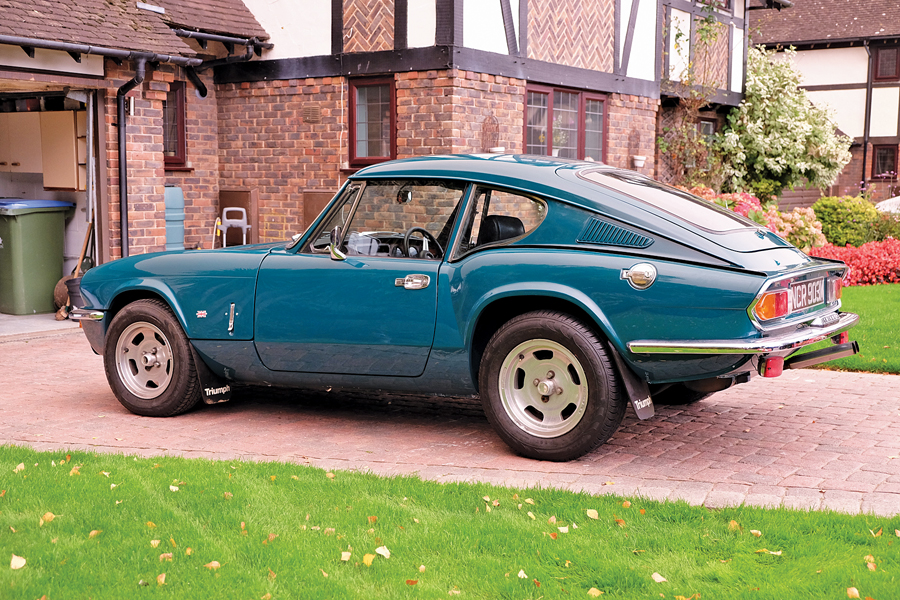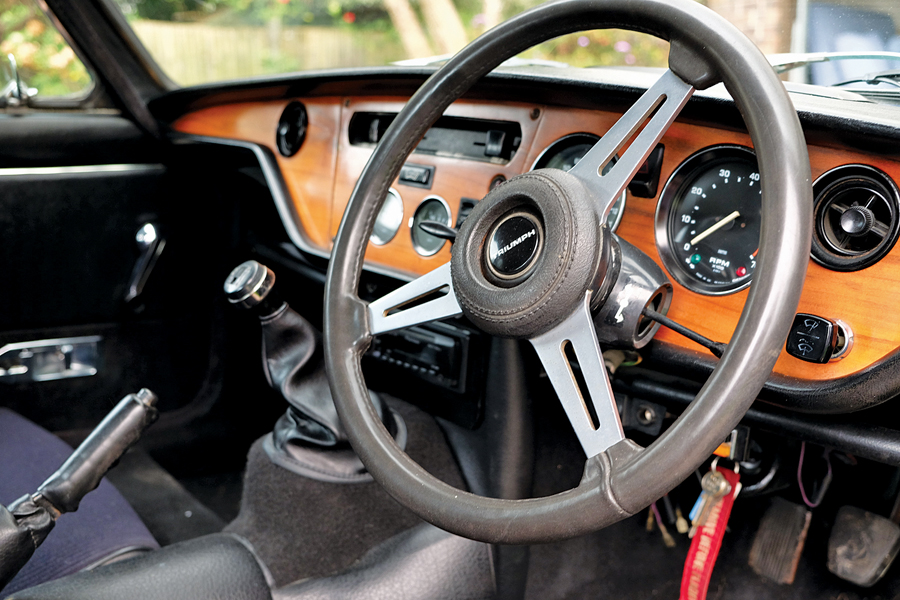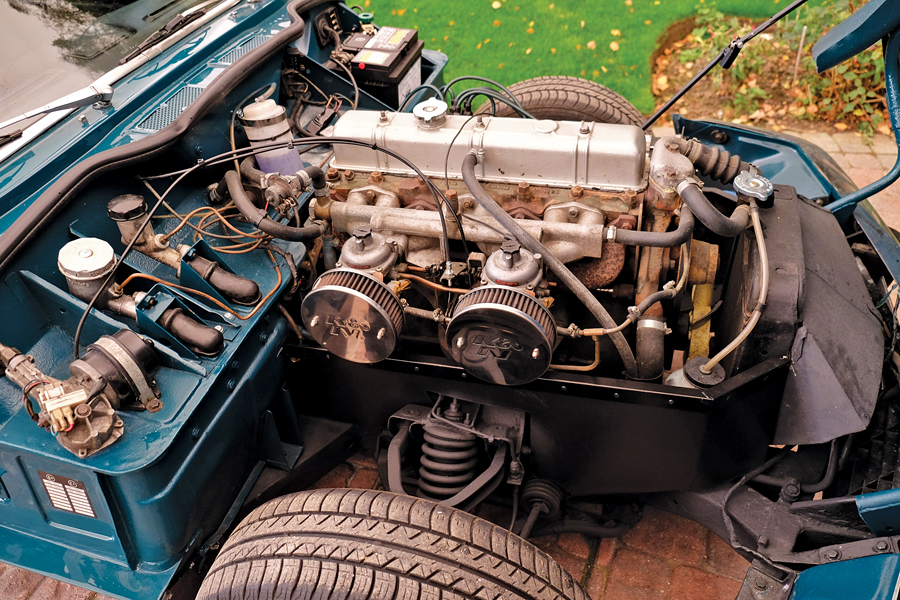There aren’t many sleepers in the collector car world with the endearing qualities of the Triumph GT6. It’s a British child of the Swingin’ Sixties, it’s rarely seen, it’s a crowd-pleaser and it’s just a plain hoot to drive.
If you fit in it.
Produced for just seven years through Mark I, Mark II and Mark III variants, the GT6 combined the Giovanni Michelotti-designed Spitfire body in coupe form with a sweet little 2-liter six-banger. Looking something like an E-type drawn by Mort Drucker for a MAD magazine parody, it quickly acquired the moniker “poor-man’s XKE.”
Not that there’s anything wrong with that.
Owners appreciate the simplicity of the model and ease of maintenance, complete with the ability to sit on one of the front tires to work on the engine with that large clamshell bonnet tilted forward. That said, to live happily with a GT6, you must appreciate the sensory experience of vintage machinery. It was never intended to isolate the driver from the sounds, smells and feel of internal-combustion propulsion.
Small cars, tight fits
And they’re small cars. An even six-foot height for a potential driver seems to be the critical dimension. Less than that, and you’re probably fine. Above that and a lot depends on how you’re proportioned and articulated. Like so many vintage British cars, it’s all part of testing your temperament. Whether you regard the cramped cabin as charming or, well, just plain cramped, you’d do well to try one on before pulling the trigger on a purchase.
For those in search of more power — and aren’t we all? — swaps from the Stromberg carbs to HS6 SUs are not uncommon, and opening up the inlet manifold works a treat.
Full disclosure also requires that we mention cabin heat. These cars — especially the early ones — are 4-speed toaster ovens in summer. Rolling down the windows only postpones heat stroke.
We must not forget to mention what is perhaps the most serious weak point, and that is the gearbox. A lot will depend on the driving technique of previous owners. If the seller has a large case full of autocross trophies, you’ve been warned.
That swing axle…
Then there’s handling. The Mark I sported a “swing axle” rear suspension. Just the sound of that should give you pause.
If you go into a corner a little hot and inadvisably lift in mid-corner, the transition from understeer to oversteer happens in milliseconds. It’s really exciting if you’ve never experienced it. Plus it’s only worse yet if the rear tire pressures are low.
Some have posited that the designers of the front and rear suspension never met each other, so your best hope is to use a “slow-in, fast-out” cornering technique to reduce the chances of tucking a rear wheel under the car. If you buy one of these models, search “camber compensator” for some valuable modification advice — and don’t say you weren’t warned.
The Mark I cars were made from 1966 to 1968.
The Mark II was known as the GT6+ stateside, although since it had less horsepower than the Mark I, some have suggested that it should have been called the GT6–.
On the bright side, the Mark II cars, built 1969–70, have a significantly re-engineered rear suspension with reversed lower wishbones and Rotoflex driveshaft couplings that are the outer articulation point on the half shafts. Therefore, they don’t have the camber problems of the swing axle on the Mark I. However, “Rotoflex” is British for “big rubber donut,” and you’ll not want these to be the original items — or even too vintage — as rubber deteriorates over time. Would you want to drive on 45-year-old tires?
Finally, the Mark III rear suspension incorporated a lower wishbone and U-joint instead of the Rotoflex, so never let it be said that the Triumph Motor Company didn’t learn from experience. Enough warranty claims and even they made adjustments. Mark III cars rolled off the line from 1970 to ’73.
Datsun killed the GT6
So what happened to the GT6? Datsun, mostly. Most agree that the introduction of the 240Z, with its coupe body, 6-cylinder motor and impressive performance resulted in lowered demand for the GT6 — as well as other British sports cars of the era.
The GT6 was simply overmatched. Triumph made about 41,000 GT6s over their seven-year run that ended in 1973, while over 168,000 240Z models were produced over the years 1970–73.
The GT6 still is a great entry into vintage British car ownership.
Ease of maintenance with a good-looking GT form, a great-sounding engine and all of the sensory stimulation you could want combine to make the GT6 a satisfying car to drive.
Even now, more than 40 years since the last GT6 was produced, just about any part you could want is available, so they are easy to keep on the road.
The usual blanket warning about rust applies here as well, but if you’re shopping for a vintage British car and you haven’t been automatically checking for rust, you’re in need of an intervention. Call me. I’m here for you. ♦



